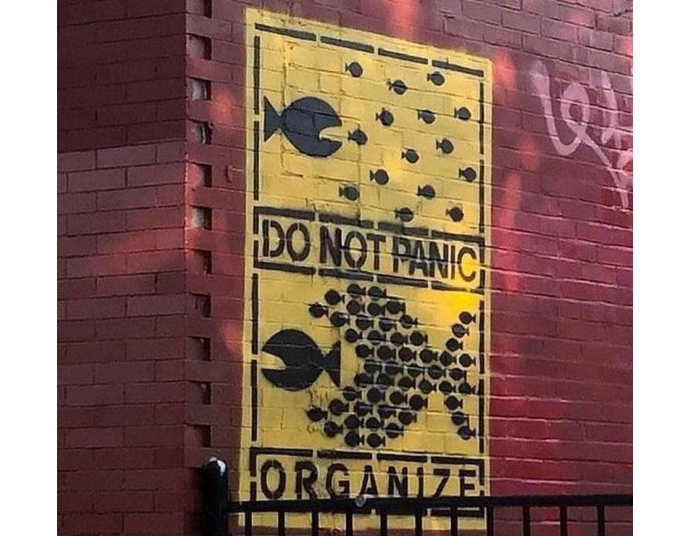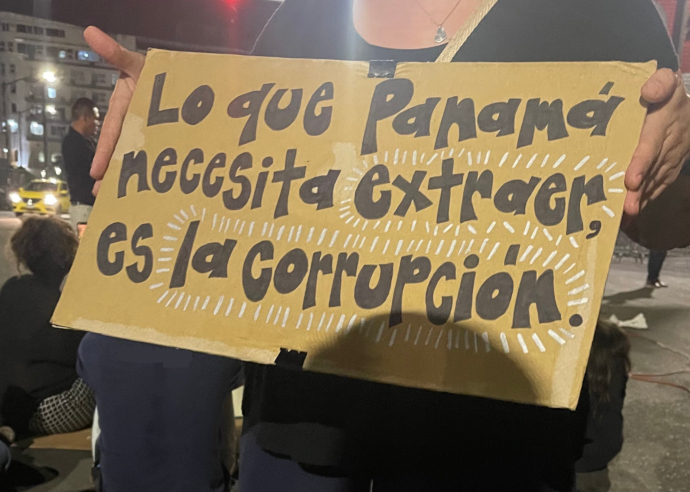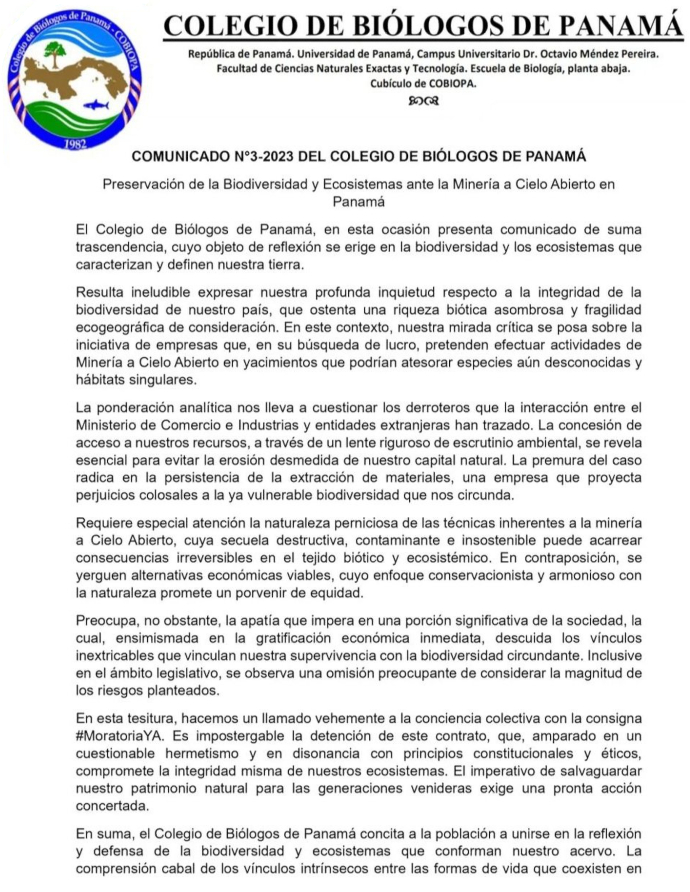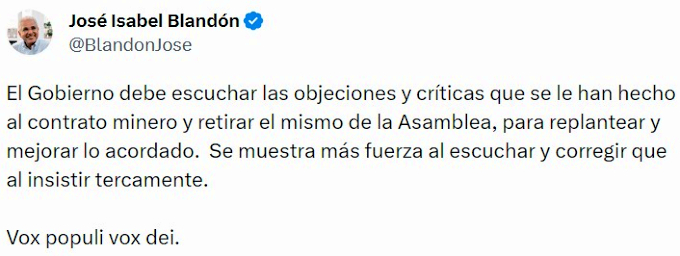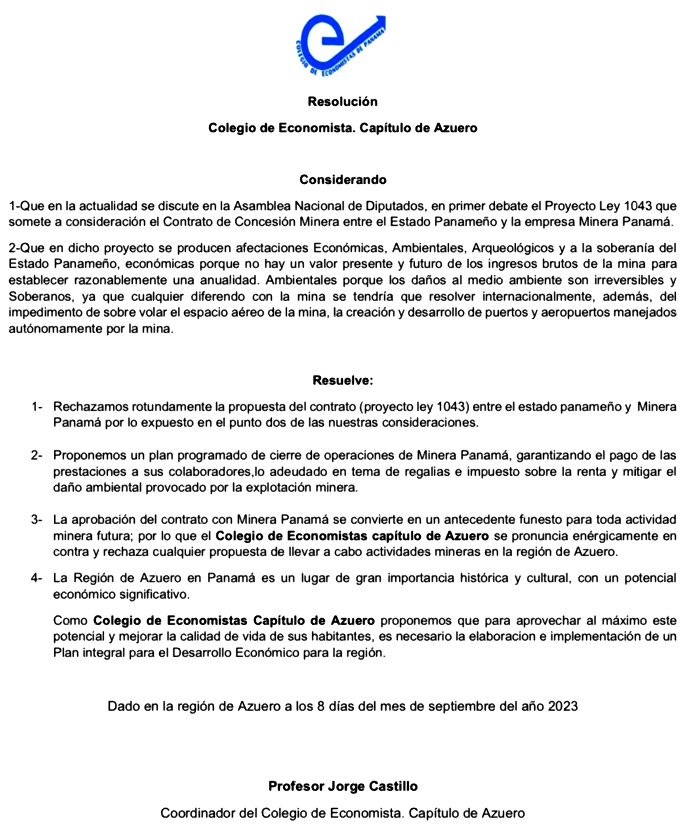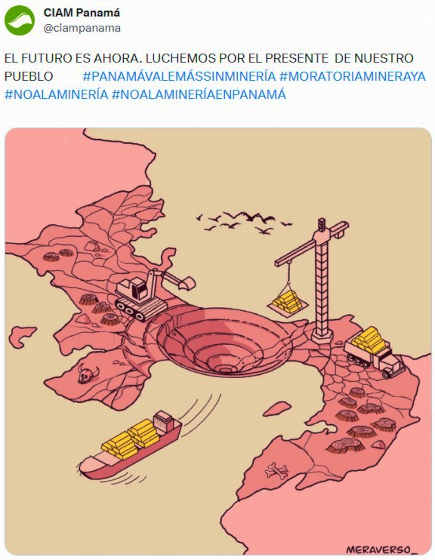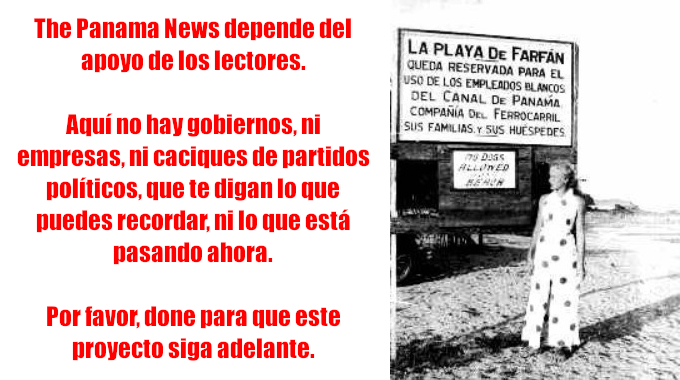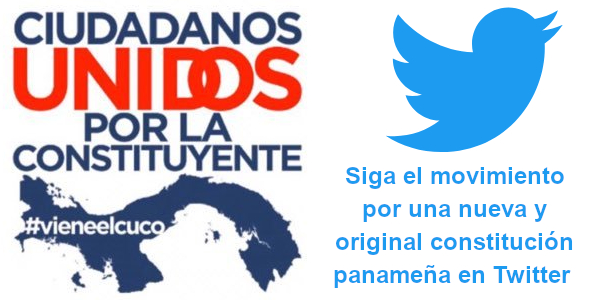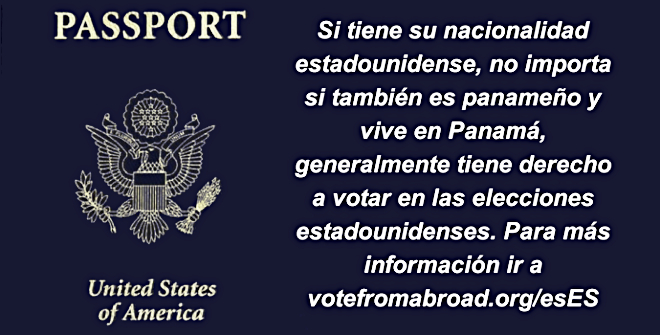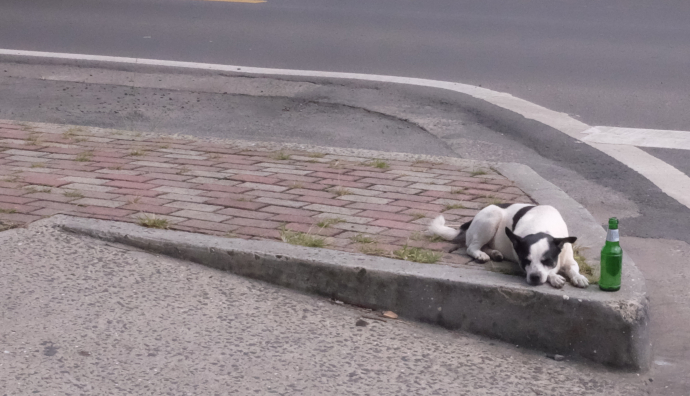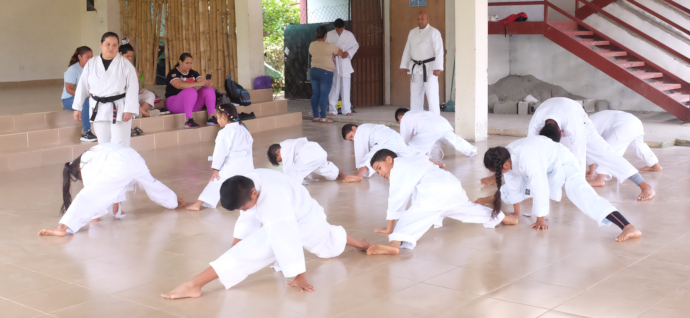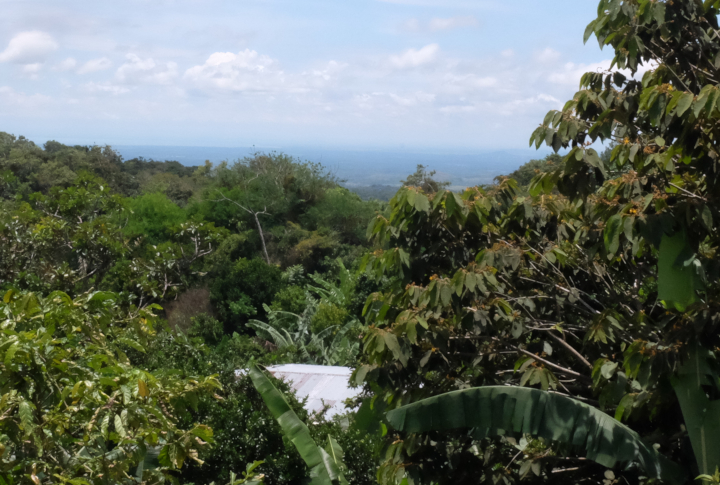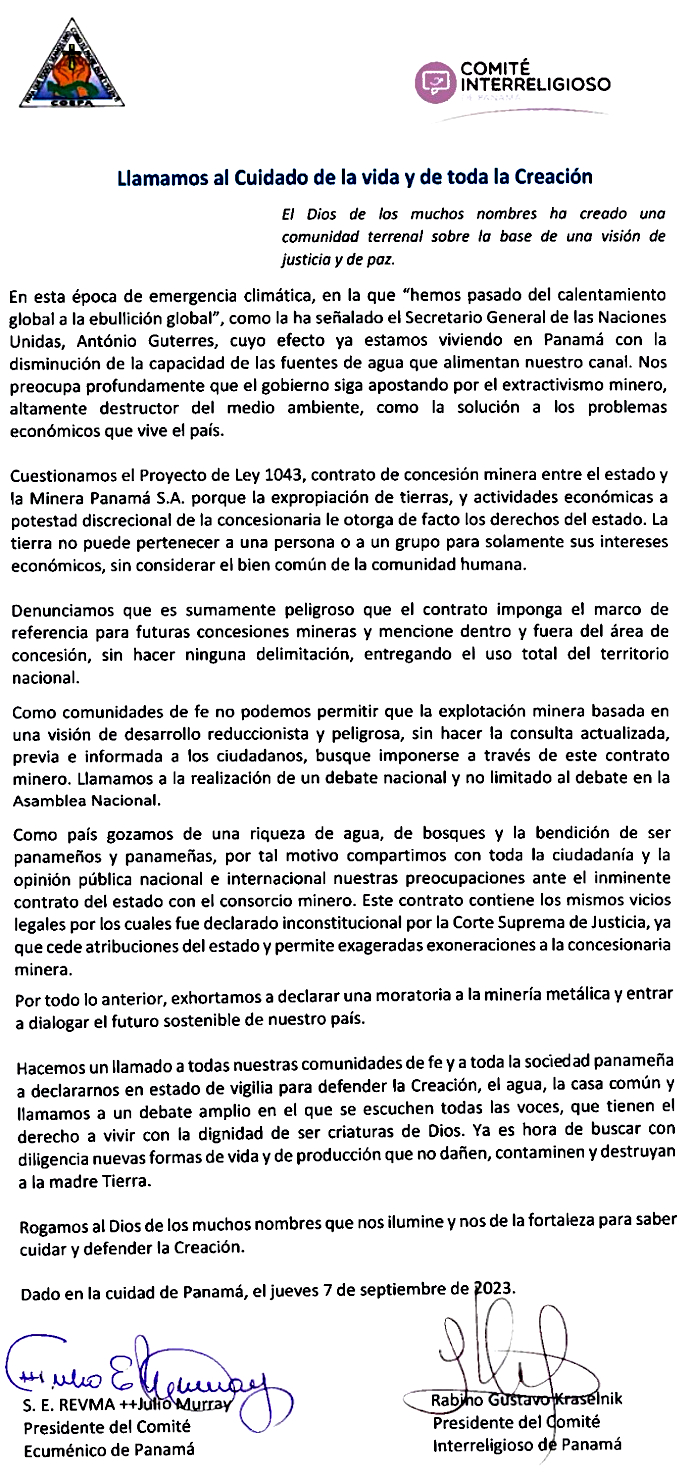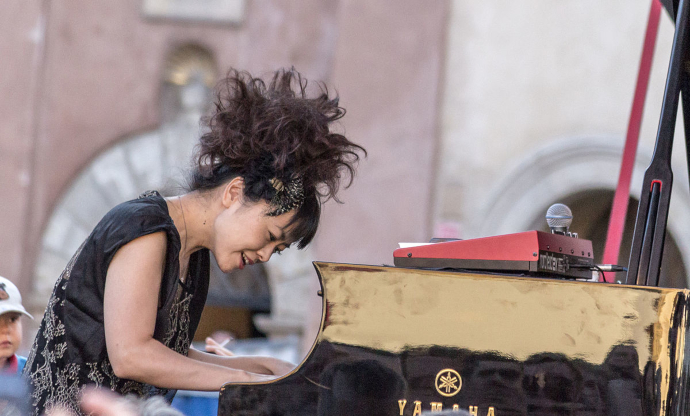In July 2016, warships from more than two dozen nations gathered off the coasts of Hawaii and Southern California to join the United States in the world’s largest naval exercise. The United Kingdom, Canada, Australia, Japan, South Korea and others sent hundreds of destroyers, aircraft carriers and warplanes. They streamed in long lines across the ocean, symbols of power and prestige.
The USS Freedom had its own special place within the armada. It was one of a new class of vessels known as littoral combat ships. The US Navy had billed them as technical marvels — small, fast and light, able to combat enemies at sea, hunt mines and sink submarines.
In reality, the LCS was well on the way to becoming one of the worst boondoggles in the military’s long history of buying overpriced and underperforming weapons systems. Two of the $500 million ships had suffered embarrassing breakdowns in previous months. The Freedom’s performance during the exercise, showing off its ability to destroy underwater mines, was meant to rejuvenate the ships’ record on the world stage. The ship was historically important too; it was the first LCS built, the first in the water, commissioned just eight years prior.
But like the LCS program’s reputation, the Freedom was in bad shape. Dozens of pieces of equipment on board were undergoing repairs. Training crews for the new class of ships had proven more difficult than anticipated. The sailors aboard the Freedom had not passed an exam demonstrating their ability to operate some of the ship’s most important systems.
As the day to launch approached, the pressure mounted. Top officers visited the ship repeatedly. The Freedom’s sailors understood that theirs was a “no fail mission” with “‘no appetite’ to remain in port,” according to Navy documents obtained by ProPublica.
The Freedom’s Capt. Michael Wohnhaas consulted with his officers. Despite crippling problems that had left one of the ship’s engines inoperable, he and his superiors decided the vessel could rely on its three others for the exercise.
The Freedom completed its mission, but the accomplishment proved hollow. Five days after the ship returned to port, a maintenance check revealed that the faltering engine had suffered “galloping corrosion” from saltwater during the exercise. A sailor described the engine room as “a horror show” with rust eating away at the machinery. One of the Navy’s newest ships would spend the next two years undergoing repairs at a cost of millions.
It took investigators months to unravel the mystery of the engine’s breakdown. But this much was clear at the outset: The Freedom’s collapse was another unmistakable sign that the Navy had spent billions of dollars and more than a decade on warships with rampant and crippling flaws.
The ongoing problems with the LCS have been well documented for years, in news articles, government reports and congressional hearings. Each ship ultimately cost more than twice the original estimate. Worse, they were hobbled by an array of mechanical failures and were never able to carry out the missions envisaged by their champions.
ProPublica set out to trace how ships with such obvious shortcomings received support from Navy leadership for nearly two decades. We reviewed thousands of pages of public records and tracked down naval and shipbuilding insiders involved at every stage of construction.
Our examination revealed new details on why the LCS never delivered on its promises. Top Navy leaders repeatedly dismissed or ignored warnings about the ships’ flaws. One Navy secretary and his allies in Congress fought to build more of the ships even as they broke down at sea and their weapons systems failed. Staunch advocates in the Navy circumvented checks meant to ensure that ships that cost billions can do what they are supposed to do.
Contractors who stood to profit spent millions lobbying Congress, whose members, in turn, fought to build more ships in their home districts than the Navy wanted. Scores of frustrated sailors recall spending more time fixing the ships than sailing them.
Our findings echo the conclusions of a half-century of internal and external critiques of America’s process for building new weapons systems. The saga of the LCS is a vivid illustration of how Congress, the Pentagon and defense contractors can work in concert — and often against the good of the taxpayers and America’s security — to spawn what President Dwight D. Eisenhower described in his farewell address as the “military industrial complex.”
“There is a lot of money flowing through this vast ecosystem, and somehow the only thing all these people can agree on is more, more, more,” said Lyle Goldstein, a former professor at the US Naval War College who is now investigating the costs of war at Brown University. “Unfortunately, I just think it might be in the nature of our system.”
This year, the Defense Department asked Congress to approve a staggering $842 billion — nearly half of the federal government’s discretionary spending — to keep America safe in what the Pentagon says is an ever more perilous world. As House and Senate leaders negotiate the final number, it is unlikely they will spend much time discussing ways to prevent future debacles like the LCS.
Such a conversation would cover hundreds of billions of misspent taxpayer money on projects from nearly every branch of the military: The F-35 fighter jet, deployed by the Navy, Marines and Air Force, is more than a decade late and $183 billion over budget. The Navy’s newest aircraft carrier, the Gerald R. Ford, cost $13 billion and has yet to prove it can reliably launch planes. And the Army’s Future Combat System was largely abandoned in 2009 after the military had dedicated more than $200 billion on a battlefield intelligence network meant to link troops, tanks and robots.
The LCS program offers another clear lesson, one seen in almost every infamous procurement disaster. Once a massive project gains momentum and defense contractors begin hiring, it is politically easier to throw good money after bad.
Stopping a weapons program in its tracks means people losing work and admitting publicly that enormous sums of taxpayer money have been wasted. In the case of the LCS, it took an array of naval leaders and two consecutive defense secretaries to finally stop the program. Yet even after the Navy said it only needed 32 littoral combat ships, far fewer than the more than 50 originally planned, members of Congress forced the Pentagon to buy three more.
Former Lt. Renaldo Rodgers remembered laboring in San Diego from sunrise to sunset for months to ready the Freedom for a 2012 trial mission to San Francisco, only to have the ship break down during pretrial tests. Rodgers initially thought the futuristic ship looked like something out of “Star Trek.” But he soon learned it was no Starship Enterprise. It became the laughingstock of the waterfront, with other sailors deriding it as “Dry Dock One,” because it so rarely left port.
“It sucks,” he said. The LCS was “a missed opportunity.”
The Navy has tried to retire many of the littoral combat ships years before they reach their expected lifespan. Ships designed to last 25 years are being mothballed after seeing less than a decade of service.
In response to questions, the Navy acknowledged the LCS was not suitable for fighting peer competitors such as China. The LCS “does not provide the lethality or survivability needed in a high-end fight.”
“The Navy needs a more ready, capable, and lethal fleet more than a bigger fleet that’s less ready, less capable, and less lethal,” the statement read, saying the money would be better spent on higher-priority alternatives.
The cost of the program has gnawed at John Pendleton, who for years was a top military analyst at the Government Accountability Office and has studied the rise and fall of the LCS as closely as anyone in Washington.
Now retired, but unable to shake what he views as one of the most wasteful projects he’d encountered in his nearly 35-year career, Pendleton reviewed budgetary documents and GAO reports for ProPublica going back decades. His conclusion: The lifetime cost of the LCS class may reach $100 billion or more.
“In the end,” he said, “the taxpayers get fewer than 30 limited-survivability, single-mission ships.”
Pendleton is hardly alone in his assessment. Many regard the tortured path of the LCS as evidence of a damaging strain of hubris that runs rampant in the world of military innovation.
“It’s this zombie program phenomenon where everybody knows deep down we are going in the wrong direction,” said Dan Grazier, a former Marine Corps captain, who now works on Pentagon reform for the nonprofit Project on Government Oversight. “But because so much money is involved and so much political capital is invested, you can’t stop the train until the problems are so overwhelming that no one can feign support for it.”
The two narratives of the ship — unstoppable in Congress, imperiled at sea — intertwined alarmingly
during one 10-month stretch beginning in December 2015. During that period, five of the vessels broke down across the globe, each illuminating a new set of problems and effectively proving the critics right.
The Freedom was the third ship to fail. Captured in a Navy investigation more than 600 pages long, the incident stands out as a particularly devastating and detailed example of the Navy’s plight.
An Admiral’s Vision
In 2002, Adm. Vernon Clark stared down from the deck of a Danish warship at a pier in Denmark and watched a demonstration that would shape the future of the US Navy.
A large deck gun sat below. On the orders of a Danish navy official, a crane hoisted it off the pier and installed it on the ship. Within 40 minutes, sailors were rotating the weapon to prepare it for operation.
No American ship could swap weapons on and off deck like that. But the Danes made reconfiguring a vessel to carry out different missions look easy. Clark, the head of the US Navy at the time, marveled at the technology.
“This is it. Of course, this is it,” Clark remembered telling himself. “I didn’t know that they could do that.”
For Clark, the Danish demonstration crystalized his idea for a new ship that would be different from anything the Navy had done before. It would be small, relatively lightly armed and operated by about 40 sailors — far less than the average warship crew size. The weapons systems would not be permanently installed.
Instead, he envisioned a sort of Swiss army knife for the Navy. Armed with one set of weaponry, it could hunt and destroy submarines. But if the threat shifted, it could be quickly outfitted to detect and clear underwater mines or to fight other warships.
As Clark envisaged it, the new ships could be deployed in coastal, or littoral, waters, where the Navy needed to expand its presence around the world: in the Persian Gulf to participate in the war in Iraq, in the Caribbean to track down gunrunners and in Southeast Asia to help smaller allied navies. They would be one of the fastest warships in the world — able to fight near shore, outrun larger vessels or hunt down the small ones increasingly popular with foes like Iran. The ships would be built quickly, in large numbers and at low cost.
The first red flags emerged here, at the conception of the LCS. As Clark began sharing his vision, concerns began to brew among Navy shipbuilding experts, who feared it was overly ambitious and technologically infeasible. Clark was unbowed.
He was an unlikely candidate to begin a revolution in shipbuilding. With an undergraduate degree from Evangel College, a small Christian school in Missouri, and an MBA from the University of Arkansas, he hardly fit the mold of a prototypical chief of naval operations who was groomed for leadership from his earliest days at the Naval Academy in Annapolis, Maryland.
A self-professed “radical,” at times irreverent and impassioned, he wanted to run the Navy like a business, streamlining training, rooting out misspent dollars, retaining sailors who shined and getting rid of those who did not.
He believed the Navy needed a more cost-effective and technologically advanced fleet. Many of the Navy’s ships had been built during the Cold War. Massive carriers, destroyers, battleships and cruisers were facing retirement, in part because updating them with modern technology was prohibitively expensive, Clark said.
In keeping with his business background, Clark wanted as few people on the new ships as possible. “What I really want is an unmanned ship that’s got R2-D2 in it,” he said, recalling his thinking at the time.
Doubt dogged Clark’s dream from the start. Congress agreed to begin developing the ship in 2003 — despite a House Appropriations Committee report that warned that there was “no ‘road map’ of how the Navy will achieve the system required.”
One former admiral who worked on plans for the ship said Clark’s insistence on speed — up to 45 knots, or about 50 miles per hour — created immediate problems. A ship cannot go that fast for very long without running out of gas, which meant it could never stray far from its fuel supply. Its small size — many in the Navy joked that LCS stood for Little Crappy Ship — limited the weapons it could carry.
The former admiral said he raised concerns with his superiors but wished he had been more vocal. “As a subordinate naval officer, when your boss tells you, ‘Here’s a shovel, go dig the hole,’ you go dig the hole.”
The Navy pushed ahead. In May 2004, it awarded contracts to two teams of defense contractors to build up to two prototypes, each of their own design.
Both teams had lobbied heavily to win the contracts. Lockheed Martin, which partnered with the Marinette Marine shipyard in Wisconsin, plastered the Washington, DC, Metro system with advertisements extolling the ability of its proposed ship.
The other team, a joint venture between General Dynamics and Australian shipbuilder Austal, planned to build its version at a shipyard in Alabama.
In response to the Navy’s goals, the contractors both based their original ship designs partly on high-speed ferries for cars or passengers, an unusual choice for a vessel meant for war not transportation.
With an emphasis on speed and dexterity, the ships were not designed to withstand much damage. Clark saw them fighting under the protection of larger, more lethal ships. To him, investing too much in protecting the ship with extensive armor would make it too heavy to operate near shore.
“Show me a ship that can take a direct hit with today’s modern weaponry and survive,” he said. “Why spend all this money pretending?”
This argument disquieted lawmakers. Toward the end of Clark’s tenure, members of Congress began to ask whether this meant the Navy had deemed LCS sailors expendable.
After Clark left the Navy in July 2005, the Navy responded to the concerns, redrawing the blueprints for the ships as they were being built to better protect sailors.
Costs began to rise dramatically. The ships were originally supposed to cost no more than $220 million dollars each, which had helped sell them to Congress in the first place. But the final price tag rose to about $500 million each.
Robert Work, a former deputy defense secretary who became a key proponent of the ship, said many in the Navy thought the initial estimate was unrealistic. “The Navy never believed it, at least the people who had to build the ship,” he said.
Despite the rising costs, the LCS soon gained a new champion so devoted to its construction that he led a yearslong campaign to resist efforts by two secretaries of defense to scale back the program.
A “Foreseeable” Disaster
On the morning of Nov. 23, 2015, the USS Milwaukee set out across the frigid waters of the Great Lakes for its maiden voyage. The cost overruns had made headlines, but with the fifth ship in the water, Navy officials were hoping the vessel’s performance would lessen the growing doubts about the project.
The Navy planned to sail the Milwaukee from the shipyard on the shores of Lake Michigan in Marinette, Wisconsin, to its new home port of San Diego. From there, it would eventually join its sister ship, the USS Fort Worth, in helping to counter the Chinese navy’s expanding presence in the Western Pacific.
In a press tour days before the launch, Cmdr. Kendall Bridgewater evinced confidence, proclaiming that the enemy “would be hard pressed to find a vessel that could come up against us.”
But the ship wouldn’t need a fight to suffer its first defeat. Its worst enemy would be its own engine.
On Dec. 11, about three weeks into the two-month journey, a software failure severely damaged the Milwaukee’s combining gear — a complex mechanism that connects the ship’s diesel engines and its gas turbines to the propulsion shafts, producing the power necessary for it to reach top speeds.
A Navy salvage ship had to tow it some 40 miles for repairs at a base near Norfolk, Virginia. The ship hadn’t made it halfway down the East Coast — let alone to the South China Sea — before breaking down. If the Milwaukee were a brand new car, this would be the equivalent of stalling on its way out of the dealership.
Some former officers look back on the breakdown and those that followed as a clear violation of a cardinal principle in Navy shipbuilding: to “buy a few and test a lot.” But with the LCS, the Navy was doing the opposite. Commanders were learning about the flaws of the ships as they were being deployed.
“This is a totally foreseeable outcome,” said Jay Bynum, a former rear admiral who served as an assistant to the vice chief of naval operations as the ships were entering the fleet. “Just think about it, Toyota checks out all of this before the car hits the showroom floor. What if the engineering guys there said, ‘Well, we think this is how the engine will work, but let’s just start selling them.’”
“Do we want this ship to survive?”
On a breezy Friday in March 2011, Secretary of the Navy Ray Mabus addressed a crowd of sharp-dressed politicians and begrimed workers gathered at a shipyard in Mobile, Alabama.
Mabus, tall and dapper, announced the names for two of the Navy’s newest littoral combat ships. One would be called the USS Jackson — a reference to the capital of his home state, Mississippi.
As he looked out at the waters of Mobile Bay, Mabus lauded the new class of ships that had emerged from Clark’s vision a decade before.
“It’s a drug runner’s worst nightmare, it’s a submarine’s worst nightmare,” he declared, speaking in his soft Southern drawl. “It’s anybody who wants to do harm to the United States of America or the United States Navy, it’s their worst nightmare.”
In fact, the LCS was on its way to becoming one of the Navy’s worst nightmares — and Mabus was its biggest cheerleader.
Better known for his political acumen than his military experience, Mabus served three years in the Navy in the early ’70s, including time at sea as a lieutenant junior grade on board the USS Little Rock.
Afterward, he rose through Democratic ranks to become governor of Mississippi, an ambassador to Saudi Arabia and eventually the longest-serving Navy secretary since World War I.
During his tenure as the Navy’s civilian leader, he put his stamp on the service by pursuing a range of progressive policies including gender integration and the use of renewable fuels. He also took advantage of a unique perk: tossing out the ceremonial first pitch at major league stadiums across the country.
His most transformative view on US military strategy was his belief in the need for more ships.
The fleet had shrunk to less than half the 600 it wielded toward the end of the Cold War. China was rapidly expanding its navy and Russia was investing heavily in new submarines.
Mabus, who became secretary in 2009, pursued a plan that would make him one of the Navy’s most prodigious shipbuilders.
In an interview with ProPublica, he reiterated the “sheer importance of numbers” for the fleet. He backed the LCS, he said, because it would help meet an array of the Navy’s needs as fast as possible.
Even as a growing number of senior officers began to criticize the ships, Mabus expanded the program, drawing on his political connections and savvy dealmaking to defend the LCS against powerful opponents on the Hill and in the Pentagon.
Mabus acknowledged that his support of the LCS project put him at odds with some of the Navy’s top officers and the nation’s civilian military leadership. He recalled resistance from what he dubbed the “Alumni Association,” powerful former Navy officers who he said reflexively and unfairly disliked the ship because it was so different from anything else the Navy had built. For Mabus, his key role as civilian leader of a tradition-bound military service was overcoming its hostility to change and innovation.
Chief among the old-school critics, he said, was Sen. John McCain, a Republican from Arizona and decorated Navy veteran whose father and paternal grandfather had both been Navy admirals. He, along with Sen. Carl Levin, a Michigan Democrat, had emerged as skeptics of the LCS as leaders of the Senate Armed Services Committee. Both were alarmed by the costs, which had soared to more than $750 million apiece for the initial ships.
In response to such concerns, the Navy lowered the price by pitting the two teams of contractors against each other in a bidding war. Austal and Lockheed Martin turned in two different ship designs with similar price tags. Navy leaders dithered over which to select.
In the fall of 2010, Work, the Navy undersecretary at the time, said Mabus gathered senior naval leaders together to ask a blunt question: “Do we want this ship to survive?”
When the group answered yes, Mabus proposed a politically adroit solution: The Navy would select both companies to build the new ships in two shipyards, one in Alabama and one in Wisconsin.
Mabus calculated that he would win the support of congressional delegations from both places by delivering thousands of jobs and millions in spending to each, Work recalled. Spreading the wealth would increase the ships’ chances of survival. But it would also make the program harder to kill when problems arose.
“He was looking at the problem in a different way than we were looking at it because he was a professional politician,” Work said.
Mabus’ plan concerned some Navy leaders. The Austal ship, which was the basis for the Independence class, would be an aluminum trimaran — a ship with three hulls. The Lockheed Martin ship, which formed the basis for the Freedom class, would be a more conventional monohull forged of steel. The radically different designs meant that the ships could not trade parts or sailors, making them more expensive to maintain and crew. In addition, the contracts called for the contractors to build a total of 20 vessels, a large commitment for a relatively unproven warship.
But Mabus and his team argued that those additional costs would be dwarfed by the savings the Navy would enjoy in the long run — one top official found that the Navy would save $2.9 billion by awarding long-term contracts to both companies.
To Mabus, it was a win-win for all involved: each ship had its own benefits, taxpayers would get a better price, the Navy would get more ships faster and the shipyards would get more jobs.
He told ProPublica that keeping the shipyards active was always a “consideration, but it wasn’t the main driver” behind the decision. The real incentive, he said, was price, not politics.
But the political payoff soon became evident.
McCain held a hearing, where he excoriated the Navy. “The story of this ship is one that makes me ashamed and embarrassed as a former Navy person and as a person who’s responsible to the taxpayers of my state,” he said. (McCain died in 2018.)
But in a last-minute budget bill to keep the government open in late December, Sen. Richard Shelby, the Alabama Republican, inserted language to buy ships from both shipyards.
“He made sure it happened,” a Shelby spokesman said at the time.
And Levin, the Michigan Democrat once critical of the ships, now supported them. The Marinette shipyard is just over the Michigan border in Wisconsin. Levin called the plan to build 10 ships there “a major boost for the region’s economy” and applauded the Navy in its efforts to bring costs down. (Levin died in 2021).
As one former vice admiral put it, “politics is king in the shipbuilding business.”
“We ask for help, but there isn’t enough”
Just a month after the USS Milwaukee stalled in Virginia, the ship it was supposed to join in the South China Sea suffered its own embarrassing breakdown.
The USS Fort Worth was nearing the end of an otherwise successful deployment. It had helped with a search-and-rescue operation following an Indonesian commercial plane crash and participated in joint exercises with several allied navies.
But the Navy had decided to frequently rotate the small LCS crews in order to reduce burnout and, in November 2015, a new, inexperienced crew took over.
Even the commanding officer, Michael Atwell, had “few opportunities to gain valuable at sea experience” before his deployment, according to a later Navy investigation.
On Jan. 5, hundreds of gallons of fuel spilled into the ship’s main machinery room. The sailors had to spray chemical foam on the fuel to prevent it from catching fire. Then, in grueling, filthy shifts, they took turns crawling into the tight compartment to clean it up with rags and pumps.
The day after the spill, the Fort Worth pulled into a port in Singapore for a week of scheduled maintenance.
There it became clear that the ship had been “ridden hard,” according to officers interviewed in the Navy investigation. Leaks had sprung out of various parts, the engines were in bad shape, the electric generators needed work and the crew was exhausted. There was “no break, no reprieve, just increasing daily tasking,” one sailor said of their time on board.
The ship’s executive officer, the second in command, complained of a lack of support from superiors.
“We ask for help, but there isn’t enough,” he said, adding that he was told “they don’t have the bodies.”
The ship was originally supposed to leave by Jan. 12 for a “high visibility” port visit in Hong Kong. Atwell and his executive officer described a “tremendous amount of pressure” to make it happen, according to the Navy investigation.
The crew took shortcuts as it scrambled to test the engine. One of the sailors in charge of starting it skipped a routine step, failing to properly lubricate the combining gears.
“I messed up everything because I was going too fast,” the sailor later explained.
The mistake damaged the ship’s combining gear, forcing it to sit for seven months while waiting on replacement parts.
Navy leaders deemed Atwell unfit for command and removed him from his position.
Reached by phone, Atwell declined to comment.
The breakdowns on the Milwaukee and Fort Worth formed the beginning of a pattern that came to punctuate the life of the LCS program:
Ships were rushed to sea with faltering equipment. Shorthanded crews and captains without sufficient training or support tried to make them work. Breakdowns ensued. Then, the pressure to perform and restore the reputation of the program intensified anew and the cycle repeated itself.
Soon it would be the USS Freedom’s turn.
“We were essentially telling a lie”
In early 2012, sitting beneath the fluorescent glow of a Pentagon briefing room, Rear Adm. Sam Perez received a stern warning.
Weeks earlier, Chief of Naval Operations Jonathan Greenert had asked Perez to produce a report that would help him figure out how best to use the dozens of littoral combat ships that would be delivered to the Navy in the coming years.
The results were grim.
Discussing the details around a conference table, one fellow officer raised a finger to his own temple and mimicked a gun going off: Perez, he signaled, was about to risk career suicide.
It was a pattern with the LCS. Officers who criticized the ships faced consequences. An assignment to an undesirable post. Even dismissal.
Perez had found that the crews were too small. Some were stretched so thin that commanding officers had to spend time sweeping the decks, when they could have been studying intelligence reports and focusing on navigating the ship.
Contrary to what Clark observed in Denmark, the various weapons systems would not be easy to swap out. The Navy hadn’t factored in the weeks it could take for all the contractors, sailors and others who were needed to fly in from around the world to help outfit the vessels for different missions.
The two versions of the LCS complicated the problems. The designs were vastly different: They could exchange neither parts nor sailors. Perez and his staff worried that the ships would wind up sidelined because they lacked either equipment or trained crew members.
Comparing the LCS to the fleets of potential adversaries, Perez concluded that the vessels were only capable of fighting against lightly armed small, fast attack boats.
A fellow officer warned him that painting this kind of damning portrait for the highest ranking officer in the Navy, the chief naval officer, could hurt his career. At that point, the Navy had already committed to buying at least 20 more ships worth billions of dollars.
Perez had already shared some of his findings with Vice Chief of Naval Operations Adm. Mark Ferguson, the second highest ranking official in the Navy.
According to a former senior officer familiar with the events, Ferguson told Perez that he was looking at the vessels the wrong way. The small ship’s performance should be compared to a patrol boat.
Perez objected. Patrol boats aren’t supposed to clear mines, fight submarines or attack surface warships. They are far smaller, designed primarily for surveillance and interdiction.
The staffers worked on the comparison for about two weeks before they began “tearing each other up because we were essentially telling a lie,” according to the former officer who worked on the project. After a vote, they decided to stop comparing the LCS to a patrol boat.
Immediately after Perez delivered the report, he received a call from Bynum, a former rear admiral who at the time worked for Ferguson. Bynum told Perez to classify the report secret.
“That was absolutely my recommendation,” Bynum said in an interview with ProPublica. The report, he said, included a “host of vulnerabilities that didn’t need to be shared in the open press.”
At a PowerPoint presentation of his findings, Ferguson was curt. The former officer said Ferguson only allowed Perez about two words per slide, instructing him to flip to the next image before he could finish the last one.
In an interview with ProPublica, Ferguson did not recall asking Perez to compare the LCS to a patrol boat, but he acknowledged he was disappointed by key aspects of the report. Known to have a brusque style, he said he may well have sped through his presentation.
“I didn’t dispute any of the critique,” Ferguson said. “LCS had serious issues. But I wanted more in the way of recommendations on how to go forward; how to integrate them into the fleet.”
Soon after, Perez was assigned to the international relations department of the Navy. About a year after that, he became liaison to the State Department. Neither are regarded as ideal assignments for an admiral who had spent a career carrying out missions at sea.
Perez declined to comment.
For his part, Greenert said the idea that Perez was punished for speaking up was “nonsense.” On the contrary, he said it helped prompt him to increase the staffing and budget for LCS.
Around the same time, Greenert asked another senior officer, three-star Adm. Tom Copeman, to evaluate the LCS as part of a larger report on the surface fleet.
Copeman, then in charge of the fitness of the Navy’s vessels for combat, echoed concerns about the ship’s combat abilities. He thought the LCS was not lethal enough. The Navy’s contract called for 24 ships, with plans to build more than 50. Copeman recommended that the Navy halt building the ships after fulfilling the contract.
In March 2013, the memo was leaked to the trade press. Copeman immediately received calls from one of Mabus’ top staffers. He told Copeman that Mabus was extremely disappointed that Copeman had publicly disagreed with him. Copeman told him that the memo was never intended for public consumption and that he didn’t know how it got out.
As ProPublica previously reported, Greenert asked Copeman to retire early in mid-2013 after he had publicly expressed concerns over the fitness of the Navy’s ships for combat.
Greenert said Copeman was not asked to retire early. He said Copeman helped to convince him to ask for more weapons on the LCS.
Copeman declined to comment.
The Navy needed a lot more ships, and the LCS program was going to help provide them.
Freedom’s troubles
About six months after two of its sister ships were docked for repairs, it was the Freedom’s turn in the spotlight.
But on July 7, 2016, the day before the ship was supposed to begin its part in the global Navy exercise, a string of equipment failures forced its captain into a bad spot: Wohnhaas had to submit a “fail to sail” message to his superiors — an embarrassing signal that the ship was not ready to go.
Working through the night, engineers on the Freedom eventually realized a part called a cannon plug used in the ship’s complicated propulsion system needed to be replaced. Without it, the ship couldn’t go anywhere.
They discovered one in Port Hueneme, about an hour north of Los Angeles. The engineer battled through five hours of Southern California traffic to pick it up and bring it back. The ship departed its port in San Diego a day late, then suffered another setback.
Three miles outside Mexican territorial waters, a loud metallic noise clanged out, startling the crew. Wohnhaas slowed the ship down but it began to drift. The crew dropped anchor to stop the ship and then steamed back to port.
He was sent back out to sea and senior officers later criticized him for holding up the mission.
Then on the evening of July 11, a leak erupted inside the main machinery room, the mechanical heart of the ship, spraying the electrical system with seawater. An inch or two pooled on the floor. If the leak wasn’t stopped immediately, it could cause short-circuiting or even a fire.
One sailor searched for the source of the leak by hand, burning his arm on a hot pipe before finding a hole seeping water. The sailors plugged the hole, but the repair backfired. It forced water to burst through a rubber seal that kept seawater out of the ship’s lubrication oil system. The water mixed with the oil, pumping a kind of emulsified goo through one of the ship’s four engines.
Two days later, the crew, again, had to return the ship to dock in San Diego. The engineer responsible for the ship while in port determined that a full repair of the engine could take as long as two weeks. Wohnhaas’ superiors rejected the idea. Time was running out for the ship to participate in the Rim of the Pacific exercise, or RIMPAC.
A Navy diesel engine expert proposed a procedure to block further corrosion of the engine with a special rinse.
A Navy expert in Philadelphia, referred to as “the guru” in the Navy investigation, approved that approach, which would allow the ship to get back to sea more quickly and complete the mission by using the ship’s three remaining engines.
Throughout the exercise, a parade of high-ranking Navy officials — including two rear admirals, a Marine Corps general, and a commodore — visited the vessel to turn up the heat on the crew and its captain.
They made clear that the Freedom’s participation in RIMPAC was “crucially important” to the entire LCS program and that there was “no appetite” for the Freedom to delay its departure. Freedom’s performance, they believed, would “perhaps modulate some of the program’s critics,” the investigation said.
Given what happened on the Fort Worth and the Milwaukee months earlier, top Navy leaders “felt pressure to deliver a ‘win’ for the program,” according to the investigation, which called the pressure on Wohnhaas “severe.”
One senior officer invoked the commander of the Pacific Fleet, Adm. Scott Swift, as wanting to use the region as a “testing grounds” for the Navy.
Reached by phone, Swift said he was a “believer in the LCS” and acknowledged that he had encouraged the Navy to test new weapons systems in the Pacific. But he emphasized that it was not an order to deploy ships at any cost.
“We made it clear if you want to take them off line, take them off line, but I am not surprised that people further down the chain didn’t feel they had that option,” he said. “The offer could have been perceived as an order, or taken advantage of by those that wanted to push harder to get a win out of LCS.”
“As a four star, if you ask for something too often people think of it as a requirement,” he said.
On the morning of July 17, 2016, the ship finally seemed ready to go.
The contractors completed the rinse and were packing up to leave. But when the chief engineer looked at samples taken from inside the engine, he was deeply worried.
“Holy shit,” he thought, according to an interview in a Navy investigation. “There’s still water in the engine.”
He sent a message to Wohnhaas that he later acknowledged was misleading because it suggested the ship was ready to go. He blamed the mistake on “not proof-reading” the text prior to sending it.
“Sir, the flush is done,” he wrote at 9:50 a.m. “I [assess] that we are still on track for tomorrow.”
Wohnhaas took this as good news and passed it on to his superiors:
“Everything is tracking toward an on-time departure,” he said in an email sent to his commodore, Warren Buller, at 11:36 a.m.
In fact, the procedure approved by the Philadelphia guru hadn’t solved the problem. Investigators would later determine the procedure could not have worked — it was meant to remove grit, not seawater, from engine oil.
The following morning, as the Freedom was preparing to depart, a senior enlisted engineer ran into a contractor he knew as Joe.
Joe told him that the engine was still contaminated.
Alarmed, the engineer discussed the situation with his supervisor, the chief engineer, who was smoking a cigarette on the front deck of the ship.
If they went to sea, the engine would rust, the engineer said. The chief engineer told him he knew it and he was on his way to tell Wohnhaas.
In an interview with investigators, the chief engineer said he told Wohnhaas something to the effect of “we can’t get underway like this, we gotta do something.”
Wohnhaas declined to comment for this story. In his interview with investigators, he said that when he learned of the contaminated samples from the chief engineer, he understood the engine was inoperable. But he was confident he could avoid further damage and complete the mission by relying on the ship’s other engines.
“There was a strong sense that we couldn’t have another LCS not meet mission,” Wohnhaas said. He did not tell his superior officers the uncomfortable fact that the engine was still contaminated because of the pressure to get underway, the investigation said.
The Freedom sailed out and detected mines in the water. The mission was a success — at least so everyone thought.
But on Aug. 3, five days after Wohnhaas returned the ship, a routine inspection revealed major damage to the engine, corrosion so extensive that the ship was docked in repairs for two years. The engine needed to be replaced.
The Navy investigation found that one failure led to another on the Freedom: The inexperienced crew used the wrong procedure to stop the leak; the Navy’s “technical community” then recommended another incorrect procedure to flush the engine; contractors executed it, providing “false hope” that it would prevent the corrosion.
Wohnhaas’ key error, according to the investigation: He failed to tell his superiors that the engine was still contaminated by seawater.
Wohnhaas was removed from command over the incident. Others, whose names and titles are redacted from the Navy report, were also recommended for discipline.
“It just felt like a big joke”
By early 2017, Lt. Jett Watson was beginning to wonder whether he had signed up to squander his naval career.
He was in the middle of training to serve as an LCS officer, spending hours inside virtual reality simulators set up in San Diego to make participants feel as if they were driving the ship.
The digital experience was impressive, but getting a real LCS out to sea was more complicated.
“I’m sure it was funny to watch us get underway just to have a big cloud of smoke go out because an engine went down and then have the tugboats pull us right back into the pier, which happened very often,” he said in an interview with ProPublica. “I mean, it was almost a game just to watch.”
Becoming a full-fledged surface warfare officer in the Navy requires hundreds of hours at sea. In interviews with current and former officers, the LCS program was described as a place where careers go to die. The ships broke down so frequently that officers spent key years in which they were supposed to gain experience at sea sitting around waiting for repairs to be completed.
Watson felt deceived.
A couple of years earlier, he had come under the spell of the LCS as a student at the Naval Academy.
There, recruiters for the program spread the gospel of its small crew size and purportedly aggressive deployment schedule, convincing him that the ship suited only the most elite sailors and officers.
Watson was so taken by the promise of the ship that he became a kind of “LCS evangelist,” convincing his friends at the academy to join the program with him.
He remembered sweltering beneath the Maryland sun during his graduation ceremony, where Mabus delivered a kind of a final exhortation to the newly sworn in officers.
“We are America’s away team,” Mabus said. “You didn’t come to Annapolis to sit at home when you leave here, and you won’t be sitting at home. Sailors and Marines, equally in times of peace and at war, are deployed around the world.”
Hailing from Lubbock, Texas, Watson thought the LCS would be his ticket to a meaningful and exciting career in the Navy.
He went on to serve on three littoral combat ships, each belonging to the less problematic Independence class.
“I would hesitate to say we ever did a mission,” he said.
Instead, he and others had to stomach what one current senior noncommissioned officer described as “a big shit sandwich” when they first came on board.
General Dynamics and Lockheed Martin considered much of the data and equipment on the LCS proprietary — a problem that the GAO has identified throughout the military. As a result, only their employees were allowed to do certain repairs, former officers said. This sometimes meant that contractors would go overseas to help, adding millions in travel costs and often delaying missions. The Navy recently purchased some of the data. A Navy spokesperson would not disclose the price “due to proprietary reasons.”
Watson and others spent much of their time escorting contractors while on board because so many areas on the ship were considered classified, reducing their ability to do their own jobs, according to interviews with multiple officers who had served on the LCS.
Cumbersome negotiations meant it could sometimes take weeks to get contractors on board. The delays were especially frustrating when trying to fix the computer network that connected everything from the radars, to the weapons systems, to the ship’s canteen. That system, another former lieutenant said, frequently shut down because of software glitches.
“You can’t ask for help from your superior commands” on shore, said the former lieutenant, who worked as a communications officer on Independence-class ships. “And you can’t even go buy yourself a soda.”
The ships needed constant repairs. But technical manuals were sometimes written only in the native language of the contractor that built the equipment. One former officer said that a manual for a davit, a type of crane used to lower a search-and-rescue boat, was written in Norwegian. He said the Navy had to spend thousands of dollars to fly in a contractor from Norway to change two fuses.
The Navy has recently increased the amount of maintenance performed by sailors.
“It just felt like a big joke,” said Watson, who left the Navy in 2021. He said many of the highly qualified sailors he worked with sought mental health assistance because they felt that their time on an LCS was a waste, affording them little opportunity to apply their skills or learn new ones.
“An average week would consist of 90 to 100 hours in port doing, honestly, nothing,” Watson said. “It felt ridiculous. Many times we were there just because we had to be there.”
At one point, a senior Navy official addressed a group of more than 50 LCS sailors assembled in an auditorium and asked how many would volunteer to come back. Two former officers familiar with the presentation said only a handful said yes.
A fight over the future
The ships’ mounting problems drew attention from the highest reaches of the Pentagon, eventually prompting two successive defense secretaries to try to halt their construction.
The first, in 2014, was Chuck Hagel, a former Army infantry squad leader and U.S. senator. The military was fighting wars in Afghanistan and Iraq, but it also needed to save money. Hagel’s advisers told him he could do that by keeping the LCS fleet to 32 ships, abandoning plans to build 52 of them.
He’d be cutting what was already understood to be a deeply troubled vessel. Studies showed that the ship couldn’t continue to fight after a missile strike and that the interchangeable warfighting packages — an idea originally at the heart of the LCS — were failing to perform.
“Do we want one-fifth of the future Navy fleet to be a ship that can’t take a hit and continue its mission?” one adviser recalled thinking at the time.
In February 2014, Hagel pledged to make the cut to 32 and asked the Navy to come up with a design for a new frigate — a larger, tougher type of warship. But Mabus pushed back. A Navy task force suggested that the LCS could be transformed into a frigate. The Pentagon’s top weapons tester told Hagel that was infeasible. But Hagel agreed with the task force, because the Navy was “going to have to live with it, and justify it. And count on it,” he said in an interview with ProPublica.
In December 2014, in one of his final acts as secretary of defense, Hagel agreed to allow the Navy to
build up to 52 smaller ships: a mix of the littoral combat ships and the new frigates, which would be based on the LCS design, but with more weapons.
In response to critics who said he had capitulated, Hagel characterized his decision as a “compromise” based on the advice of the government’s top experts.
“We brought in a lot of different people on both sides of it,” he said. “That’s the only responsible way you can evaluate these big projects as secretary of defense, because you can’t know everything about this. It’s just, no one person is that smart.”
The Navy later awarded a contract to the shipbuilder Fincantieri Marine Group to build a new line of frigates based on a different design.
Defense Secretary Ash Carter, who followed Hagel, also took aim at the LCS.
In a sharply worded December 2015 memo to Mabus, Carter said the Navy was guilty of “prioritizing quantity over lethality.” He told the Navy to limit future purchases to 40 ships, including littoral combat ships and frigates.
Mabus told ProPublica that he was blindsided by the change of course and that it led to “heated discussions” with Carter in private.
In public, he opposed his boss too: first at a naval symposium, then before Congress, then at a Wisconsin shipyard where he assured LCS builders they were working on the best ship in the world. In March 2016, under questioning from Rep. Bradley Byrne, an Alabama Republican who called the LCS his “favorite topic,” Mabus told the House Armed Services Committee that the Navy had a “validated need” for the 52 ships.
Even as Mabus testified, the ships were breaking down at sea with increasing frequency.
Mabus downplayed the severity of the incidents.
“We took it seriously,” he said. “But it did not seem, from what we were looking at, that it was a systemic problem.”
The contractors who built the ships defended their performance.
Eric Dent, a spokesperson for the Italian-based shipbuilder Fincantieri, which also built the Freedom ships in Marinette, said it did so to a design from Lockheed Martin and the Navy, referring questions to both.
Lockheed Martin spokesperson Patrick McNally said the company is proud of its work with the Navy and is focused on delivering “affordable improvements to the platform.”
Australian-based shipbuilder Austal, which constructs the Independence class of ships, and General Dynamics, which built the infrastructure for the ship’s computers, both declined to comment for this story.
The weapons systems were failing as badly as the ship’s engines.
Without them, the LCS was “only a box floating in the ocean,” said former Lt. Cmdr. Mark West, who helped lead the Navy’s development of the warfighting packages for years in uniform and as a civilian.
To help the LCS find mines, an important mission in 21st-century warfare, the Navy built a remotely operated minisubmarine designed to detect underwater explosives. West and others said it turned out to be too difficult to operate. The Navy is now dependent on an aging fleet of minesweepers that often cannot deploy.
“Imagine a 25-year-old sailor trying to remotely control a [minisubmarine] in the water that weighs 20,000 pounds as the ship is going 4 or 5 knots,” one current senior enlisted sailor said. “Then trying to bring it to the surface as a crane lowers a saddle on top of it to get it out of the water. It was damn near impossible.”
After 15 years of development and more than $700 million invested in the remote minehunting system, the Navy canceled it in March 2016.
To hunt submarines, the defense contractors created a sonar device the ship dragged through the water on a long cable from the stern. When the device detected a submarine, it was supposed to send a signal to the ship, which then dispatched a helicopter to hover over the ocean and plunge another sonar device into the water. The helicopter then dropped a torpedo to destroy the sub.
None of these components effectively communicated with one another. And the wake of the LCS made it extremely difficult to launch and recover the sonar, according to one former commodore with direct knowledge of the program.
After pouring hundreds of millions into the module, the Navy shifted the function to its new frigate.
In an interview, West said the Navy never gave the modules the same priority as the ships. They always played “second fiddle,” West said. Those working on them had to “fight and claw” to get the time and money necessary to “ensure their success.”
Coronado and Montgomery
About a month after the Freedom’s engine failed, a fourth LCS, the USS Coronado, broke down on its way to Singapore and had to limp back to Hawaii.
The breakdowns had become routine by this point. First came the fanfare over a newly christened ship, with all the requisite flag waving, handshaking, speechmaking and celebratory Champagne bottle breaking. Later, a perilous journey: a few days or weeks at sea, followed by another busted part and another tow back to port.
This time, on the Coronado, a part called a coupling would be the culprit. The device, which helped connect the water jets to the engine, had failed, hindering the ship’s complicated propulsion system. The Navy discovered it was a problem on several other littoral combat ships, too.
The GAO, which has produced dozens of reports criticizing the ships, later learned that the Coronado failed to sail six times between 2016 and 2017 because “it did not not have correct parts on board to fix simple problems.”
Important items like “circuit card assemblies, washers, bolts, gaskets, and diaphragms for air conditioning units were not on board,” the report found. “The LCS may not have adequate space onboard to stock these items.”
In August 2016, the Navy ordered a 30-day stand down of all littoral combat ships to retrain the engineering crews and improve the fleet’s performance.
A month later, a fifth ship, the USS Montgomery, suffered a series of mishaps. Over a two-month stretch, its engine malfunctioned, it collided with a tugboat and it then cracked its hull after striking a lock in the Panama Canal.
“The Navy doesn’t want them”
On May 4, 2017, about three months into the administration of President Donald Trump, the director of the White House Office of Management and Budget at the time, Mick Mulvaney, sat for an interview with conservative talk radio show host Hugh Hewitt.
They talked about “Game of Thrones,” the repeal of Obamacare and a new hire at the OMB before turning to Trump’s promise to increase the Navy’s fleet to 350 ships. How, Hewitt wanted to know, was the president going to achieve that?
Mulvaney said that the day before he had missed a meeting on the Paris Agreement — the international treaty to avert the catastrophic consequences of climate change — in order to discuss whether to buy more littoral combat ships.
“The Navy doesn’t want them,” Mulvaney said.
With the Navy on its way toward building the more powerful frigate, it appeared that the LCS program was on its last legs. The Navy requested funding for only one LCS that year.
But once again, politics intervened.
Tammy Baldwin, the Democratic senator from Wisconsin, fought for more. She wrote to Trump on May 12, casting the LCS as a rare opportunity for her and the president to work together. Both support American workers making American products, she said, but too few of the vessels in the budget would cause her state’s shipyard to lay off hundreds of workers.
On May 24, in a move that shocked the defense community, the Trump administration inserted one more ship into the budget after it had already been sent to Congress.
The Trump administration had suddenly placed a $500 million order for a new ship that the Navy didn’t ask for.
In an email to ProPublica, Baldwin said she takes “great pride in representing Wisconsin’s shipbuilding industry,” adding that she supported the LCS because it “provided new capabilities and capacity to the Navy.”
Over the next year, Congress funded yet more ships, leaving the force with 35, three more than the Navy said it needed. The additions cost taxpayers more than $1.5 billion.
In the years since, both variants of the LCS have continued to grapple with major problems. The Independence version has shown cracks in the hulls of nearly half the class. The Navy determined that a flaw in the combining gear affected the entire Freedom class. The Navy came up with a fix at a reported cost of $8 million to $10 million per ship — an expense split with Lockheed Martin.
Naval experts worry that the failures of the LCS have put the Navy at a greater disadvantage against China, which boasts the largest Navy in the world with some 340 ships and submarines, according to the Pentagon’s most recent report to Congress on the state of the Chinese military. By comparison, the Navy has roughly 294 ships and submarines.
The Navy has begun to mothball littoral combat ships far before the end of their expected lifespans.
In March 2022, the Navy announced plans to retire nine Freedom-class vessels early because of their inability to hunt submarines.
In a predictable pattern, lawmakers representing states where the ships are based fought to keep more of the ships at sea. They allowed the Navy to decommission only four. The first of those, retired last month, is less than five years old. Three other LCS had already been mothballed.
The Navy is now trying to retire two more, including the USS Jackson, the ship named for the capital of Mabus’ home state. It wrapped up its first deployment last October. Meant to have a 25-year lifespan, the ship would last only nine.






